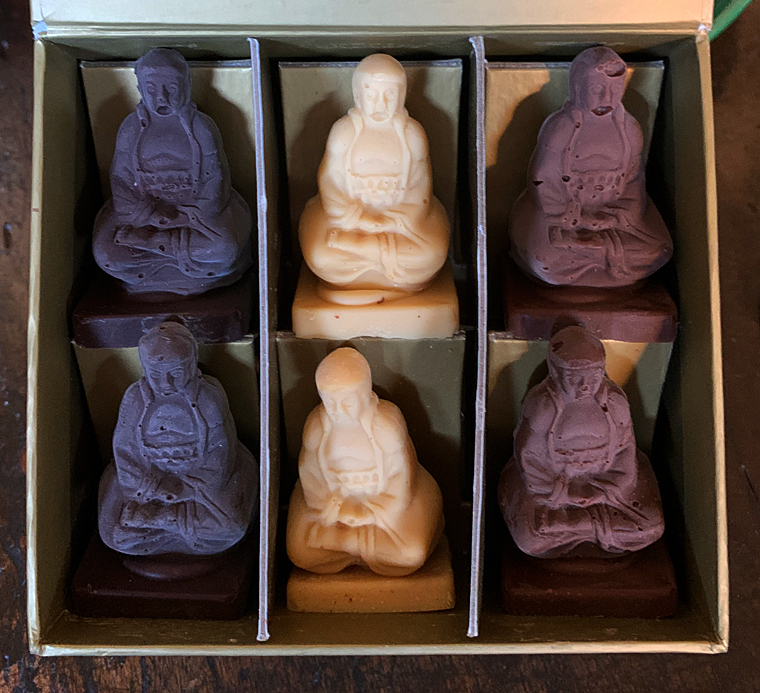
TAO of Las Vegas, according to the New York Times, is the highest grossing restaurant in America, with 2006 revenues exceeding $55 million. Featuring a restaurant, nightclub, and bar located within the Venetian casino, TAO, (generally translated as the “way”) also features an 18-foot-tall golden Buddha sitting in the Earth-Touching posture of wisdom, floating above an “infinity” koi pond. Smaller statues of the Buddha are scattered around the premises, and are available in bronze for sale in the gift shop at $39 each, along with six-packs of edible chocolate Buddhas (two milk, two white and two dark).
Is TAO Las Vegas an egregious example of insensitive exploitation of religious iconography or the manifestation of Buddhism’s widening influence in the West?
Exploring the first option, insensitive exploitation, please note that the Buddha remains an object of veneration and devotion to 376 million Buddhists worldwide. This 2,500-year-old religious tradition predates Christianity and includes among its present adherents the Nobel Prize-winning Dalai Lama of Tibet and revered Vietnamese teacher and monk Tich Nacht Han. Buddhism is not some abandoned religious curiosity, akin to the Olympian gods of Greece and Rome, but is a vital, living tradition in our modern world. Using the image of the Buddha as Las Vegas restaurant décor seems demeaning, unseemly and inappropriate. Hot-concept Vegas night-club/casinos called “Salvation” featuring the outstretched arms of Jesus, or “Big Moe’s” boasting a sculpture of Moses smashing an 18-foot-high Golden Calf would seem equally crass; neither will happen, of course, because America is a primary home to Christians and Jews. I doubt we’ll see a chocolate Jesus, either.
Viewing TAO Las Vegas from the other side of the looking glass, however, raises interesting points. Is the widespread merchandising of the Buddha a sign of things to come in America? The proliferation of Buddha images as décor may ironically be the “way,” bringing us a wee bit closer to enlightened, compassionate society. Perhaps a restaurant patron, having enjoyed the ambiance, decides to purchase one of those $39 bronze Thai Buddha heads and having taken it home and placed it on the mantle, becomes curious about it and Buddhism in general. Sometimes the path begins this way. According to the Buddhist teachings, we all carry the seed of Buddha nature within us; how, when and what awakens it is not really important, it is the awakening that matters. From this view, TAO Las Vegas does not trivialize Buddhism, but exposes the masses to Buddhism, many for the first time. Seeds are planted, some take root.
We live in strange times in which everything becomes commodity. Our materialism ironically destroys the boundary between the mundane and the sacred, either of which can be grasped too tightly in our attempts to find comfort and relief from life’s challenges; we either may slip into a cynical nihilistic view of things as having no meaning whatsoever, or overly attach ourselves to an aggressive self-righteous piety about truth that we try to impose on others. In its own weird way, TAO Las Vegas points to the qualities of these two extremes, and leads those of us so inclined to contemplate what Buddhists wisely call The Middle Way.